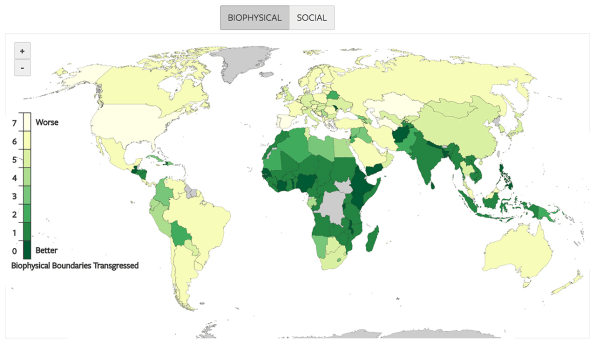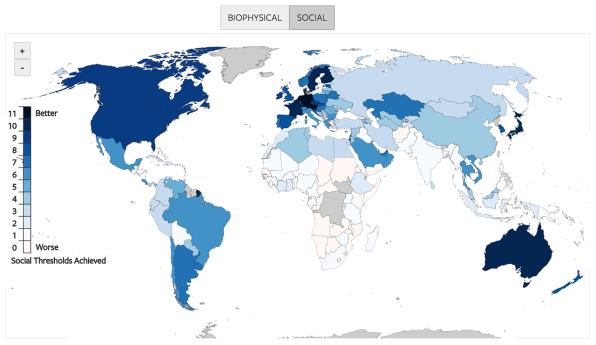No Country On Earth Is Sustainably Meeting Its Basic Needs
If you want to measure how society is progressing, GDP growth doesn’t work particularly well–it completely misses problems like inequality or climate change. One economist suggests thinking of a doughnut instead. In “doughnut economics,” the inner ring of the doughnut represents a base threshold for human needs (e.g. access to food or education) and the outer ring represents the upper limit that the planet can support (e.g. emissions that will lead to runaway climate change or biodiversity loss). The pastry represents the sweet spot: An economy that meets basic needs without trashing the planet.
A recent study took the theory and looked at how well more than 150 countries are meeting it. “We decided to see if we could test it out and put some numbers to that framework and see if any countries actually were within this doughnut of sustainable economic space,” says Julia Steinberger, a researcher at the Sustainability Research Institute at the U.K.’s University of Leeds and one of the authors of the study. “Sadly, the answer was no.”

Only three countries in the study–Germany, Austria, and the Netherlands–managed to meet 11 thresholds for basic social objectives, from nutrition and sanitation to equality and self-reported satisfaction with life. But none of those countries manage to stay within so-called planetary boundaries. Germany, for example, is using resources at an unsustainable rate for five out of seven of these boundaries (CO2 emissions, raw materials, the ecological footprint on land and the sea, and phosphorus and nitrogen used in fertilizer).
The same trend holds for all countries that do best in terms of quality of life. The U.S. meets the thresholds for nine out of 11 social goals, but fails to stay within all seven planetary boundaries. On the other end of the spectrum, 16 countries stay within all planetary boundaries, but don’t meet basic social needs. Sri Lanka, for example, has a sustainable footprint as a country at the moment, but falls short on sanitation, access to energy, equality, democratic quality, nutrition, life expectancy, social support, and life satisfaction. Thirty-five countries achieve only a single social threshold. A website shares the data for each country.

All of this poses a question: Is it possible for the world to provide a decent quality of life for everyone in a sustainable way? The study suggests that we’re not really on track at the moment. Renewable energy, for example, is growing, but still a tiny piece of overall energy production. “It’s not that it’s not making any difference, but it’s not making a visible dent in terms of planetary boundaries yet,” says Steinberger.
Systems and technology will have to change dramatically–but the study also suggests that levels of consumption will also have to change. “It’s very hard to imagine it happening with just technological production change,” she says. “It seems that consumption reduction would certainly be part of the mix, and in fact could be quite effective–also more rapid, because it doesn’t take that much time for people to stop consuming something.” And though people tend to associate less consumption with scarcity, the study also found something else–though social benefits do rise with resource use, at a certain point, the curve flattens out, and extra resources used aren’t making life better anymore. For the richest countries, cutting back a little wouldn’t decrease quality of life.
“In terms of living a good life, a high level of consumption is by no means necessary,” says Steinberger.
Fast Company , Read Full Story
(26)














